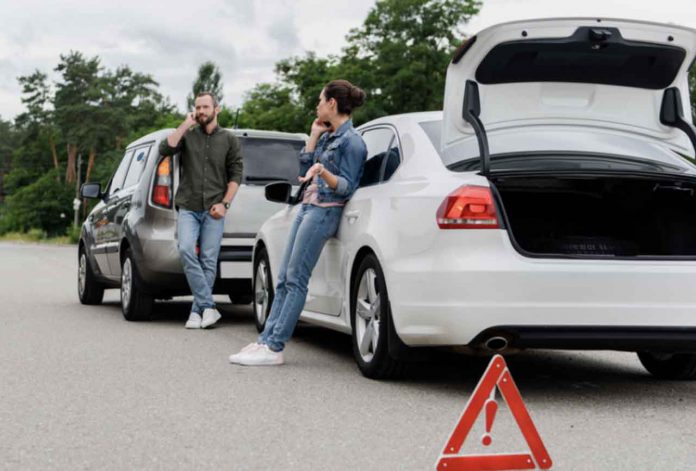Road trips are a perfect way to discover a new area of the country or a nice way to pursue new experiences. If you are planning a road trip anytime in the future, it is a smart idea to ready your vehicle for the journey before you head out so you don’t encounter any snags or run into some road issues.
Here’s how you should get your vehicle ready for a road ride.
Check your oil level
These days, manufacturers are suggesting that you change your oil every 7,500 to 10,000 miles. But to be sure your car is safe to travel, check the oil level and the date you will require an oil change before taking the vehicle or your road trip. Remember, a long drive will put more burden on your vehicle.
Please note: adding in additional oil is not the same as changing the oil, because you haven’t removed the sludge from your old oil. Oil change involves removing the old oil and putting in new oil as well as changing the oil filter.
Check your radiator coolant
Car engines produce a lot of heat and it’s the radiator that cools it down. Radiator fluid usually referred to as coolant or antifreeze, helps in removing heat from the engine and dissipating it through the radiator. Small concentrations of coolant are likely to cause overheating, so test the levels of the coolant and top it off if necessary. Ensure a flush of the system at least every 40,000 to 50,000 miles.
Check your transmission fluid
Transmission fluid allows gears to operate easily, and if not adequate, can cause expensive damage. Luckily transmission fluid lasts a long time and some cars are even sold with a “lifetime” transmission fluid.
Check the owner’s manual for the appropriate service duration of your particular vehicle, because they range from 30,000 miles to more than 100,000 miles.
Generally, however, changing the fluid at 60,000 miles usually is a smart move, especially when you have the “lifetime” fluid.
Check your windshield washer fluid
Long drives will leave your vehicle dirty and nothing is more vital to keep clean than the windows on the front of your car. In fact, maintaining the proper level of windshield wiper fluid is one of the ways you can stay safe on the road.
You ought to be able to see where you’re going after all. Getting windshield washer fluid is super basic: get a jug of fluid at every gas station, and fill the reservoir with a funnel if it gets low.
While we are talking about wiper fluid, when last did you change your wiper blades? If you haven’t done this in a while, you may be riving about with worn-out wiper blades. Ensure you replace the wipers of your car every 6 to 12 months.
Check your brake fluid
While you hit the brake pedal, fluid compresses inside the brake plates, causing the brake pads to lock on the rotors to slow the car down. If you have noticed that your brake pedal feels spongy, it could be that air bubbles have entered the fluid, or the fluid may have become contaminated. If it’s air bubbles, bleed them out, if the fluid has been contaminated, replace it. Also, ensure the brake fluid is gauged as necessary, and flush the brake system every 24,000 miles with fresh fluid.
Check your power steering fluid
New vehicles use power steering to make it easier to turn the wheel at any point, but the fluid for this can also get contaminated, rendering the steering less receptive. It is smart to check this fluid level. Your power steering fluid should be replaced about every 50,000 miles regardless.
Check your brake pads
Before going on any long trip, it is vital that you check the effectiveness of your brake pads as worn out brake pads can cause serious problems on the road.
Take off each wheel and measure the pad thickness comparing it with your carmaker’s minimum specification, which you can find on Google. Also, like tires, brake pads have wear signs that cause a hideous squeal when they need replacement.
Check your car tires
You can check your tires air pressure with a gauge, or even just perform the coin test. When you place a coin in the tread grooves and see the top of the coin still, you need fresh tires. You may just need to rotate the tires before you go so check for the last time you did that. Aside from air pressure, it’s also necessary to test if your tires will last the entire journey. During long journeys, worn-out tires can blow out.
Check your air filter
The road isn’t a clean place. Cars utilize air filters to stop particles, dirt, and bugs from reaching the inside of the vehicle. Such air filters gradually lose efficiency and may become obstructed, impacting engine output, fuel economy, and consistency of interior air.
Your engine air filter should be changed roughly once a year or about every 10,000 or 15,000 miles, and your cabin filter will last between 12,000 and 15,000 miles. Luckily these are typically inexpensive and easy to modify.
If your air filter is filthy, replacing it before a trip can be a smart idea. A dirty air filter system creates a lot of problems for your vehicle including poor performance.
If you want to change it yourself, the directions are in the car owner’s manual.
Check your car lights
Having a headlight burnt out, faulty tail light or blinker is an easy way to get pulled over on a drive, and it is very dangerous to go on a long trip with poor lights, therefore check your lights before leaving.
To do so, turn your engine on, leave it in the park, turn on the headlights, and walk around the vehicle to see if there are any bulbs burnt out. Repeat the process for the signals to turn left and right. Keep the brake pedal down with a brick with the car still in the park so you can test the condition of your brake lights.
Do a Test Run
After you have finished with all the relevant checks, it is now time for a final check and a test run.
Inspect the car visually for any things you may have overlooked. Make sure your insurance, registration, license and owner’s manual are where they should be located
It’s no secret that car care can be a pain but it’s better than having an adventure ruined by a problem that can be avoided. Your car is working hard on a road trip so give it what it needs to keep running.







